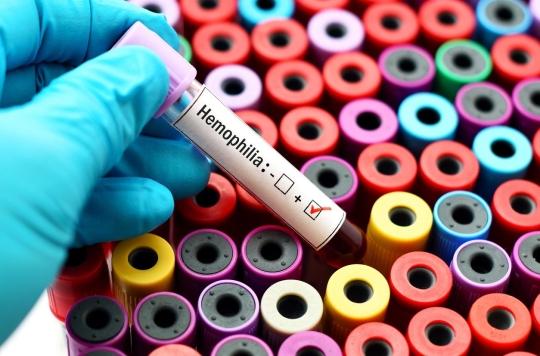Hemophilia affects nearly 5,000 people in France, half of them in its major form. In France, an estimated 15,000 people are affected by a faulty coagulation process.
It is a disease whose name is well known, first of all because it has a worrying spectacular side. It is a disease known for millennia. Next, this disease is transmitted hereditarily from father to daughter and from mother to son. So the man is still affected and the mother only the risk carrier. And can therefore transmit it.
This is important to know because the very rare cases in which a woman can be affected is when a hemophiliac gives birth to a woman with the disease. Fortunately, this is extremely rare nowadays, which was once not the case, especially among a few royal families: The genealogy of Queen Victoria is known to carry hemophilia within it, which will help to give the hemophilia the name of “royal disease” in the crowned families of Europe and Russia.
The blood of a person with hemophilia does not clot normally. The bleeding is not heavier or faster than normal, but lasts longer. These people do not bleed from the slightest cut, and superficial wounds are usually not serious. A simple plaster helps to stop the bleeding. She does not bleed more, but longer because the coagulation is not complete and the clot does not “hold”.
The problem is internal bleeding! Much more serious, especially those of the joints. Being hemophiliac is a nightmare for the knees, ankles and elbows. The slightest fall, the slightest shock causes bleeding that you do not feel and which takes time to stop. And eventually, we are witnessing real destruction of these joints.
There are degrees in the severity of the disease. It depends on the percentage of activity of the clotting factor deficient. It’s pretty easy to find out with a simple dosage. This is treated by injecting the missing clotting factor. Current treatments do not cure hemophilia, but they consist of intravenous administration of Factor 8 or 9, this is their name, which makes it possible to obtain sufficient coagulant activity to stop, or even prevent, the ‘hemorrhage.
Current treatments are either derived from blood plasma, or synthetic biotechnology products, which makes it possible to eliminate the risk of transmission of certain donor diseases such as AIDS, or viral diseases. In France in both cases, control is extremely important. But it is true that the AIDS epidemic has been particularly deadly for hemophiliacs. Many of them, needing regular transfusions, contracted the virus. This gave rise to a great political scandal, the tainted blood affair.
The existence of increasingly sophisticated treatments and the accompanying improvement in the living conditions of patients should not mask the persistence of real constraints: treatments with sometimes complex intravenous modes of administration and a natural fragility requiring sustained attention
.

















